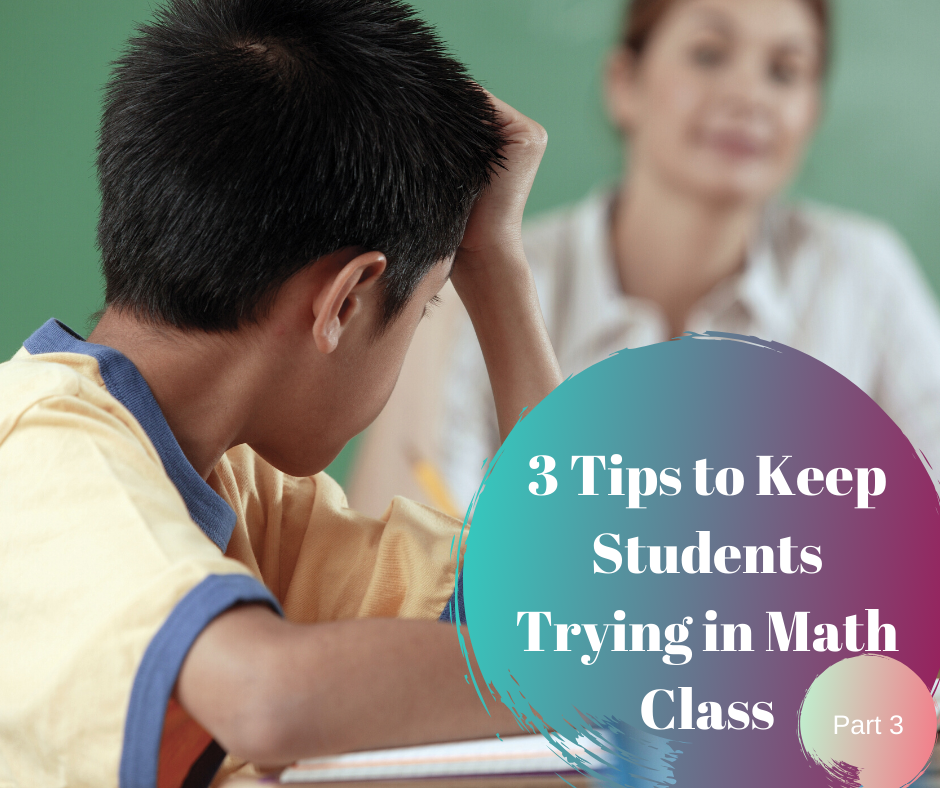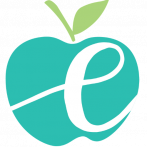
04 Nov Preventing the Shut Down- Part 3
PART 3
How do we prevent the shut down in our mathematics classrooms?
Simply, treat mathematicians like you treat writers.
I find it fascinating the content areas where we are more apt to allow students to be creative, to work on their craft before submitting a ‘final’ idea, to explore, etc.
Writing is one of these areas. We allow writers to:
- Be creative. They may have a dictated topic, but we allow them to take their own spin on the subject, to devise their own outlines, ideas, etc. We even allow them to free write without any prescribed methods. We believe it is good to allow writers to be independent thinkers and motivating to allow them to write about what they want to write about.
- Allow for outlines, brainstorming, rough drafts.
- Allow for conferencing with writers, mentor texts, and multiple revisions of ideas.
Conversely, in math…
We control how students do mathematics, outline each step they are to take, and how, choose their methods for them, etc. We do a lot more telling and allow for fewer students invented methods. In fact, the International Bureau of Education (2000) reports Japan allowing students (study was done with 8th graders) to spend more than 45% of the class time on inventing their own methods (trying to do the math how it makes sense to do the math), compared to the 1% of time Americans allow in their classrooms.
When students are just ‘told,’ they become rule followers and regurigtators. We then complain in our teacher lounges that students aren’t self-starters. They won’t try or put forth the effort. I believe these are learned behaviors and have much to do with the type of instruction they receive in mathematics. They are given opportunities to be doers of math, not to be mathematicians. Mathematicians explore, problem solve, try various methods, etc.
I have to wonder how many of our students see mathematics as final drafts. They don’t offer up new ideas in discussion or attempt to solve a problem without direction due to a fear that it has to be right the first time. I discussed this last week in terms of allowing multiple methods, but I also think it applies here, to rough draft thinking.
This is the biggest difference between our writing and mathematics instruction. In writing, we allow that brainstorming and ‘work in progress’ attitude. In math, when a method isn’t correct or an answer isn’t correct the first time, our goal is not to honor it as just getting out ideas, but more about fixing it to be RIGHT. If students get it right the first time, we praise them instead of diving deeper into revisions or other ways of thinking. We honor final draft thinking in our mathematics classrooms, not rough draft thinking.
I’ve thought this way for some time, but I value Amanda Jensen’s take on the topic as well. She is in the throes of writing a book on this very topic and speaks on the idea nationwide.
In an article (2016) written for Mathematics Teaching in the Middle School, an NCTM publication, Jansen says,
“Some students are reluctant to participate in whole-class discussions. But if they do not participate, their peers will not learn from them. During discussions, many students believe that they should perform a “final draft” of correct and complete solutions (Jansen 2009). How can we create a classroom culture that supports continued learning during classroom discourse?
Exploratory (or rough-draft) talk is one such productive strategy. Learning anything new involves “working on understanding” (Barnes 2008, p. 3). Rough-draft talk looks like false starts, expressions of uncertainty, and incomplete or imperfect sentences.”
How does this idea play out in our real classrooms? For me, it’s about honoring any and all thinking as I see it as steps towards a final. Misunderstandings are a part of a revision process. I emphasize the “PROCESS” here.
Are students ok with not being right the first time? Are they looking to just have their neighbor’s answer, the desired teacher’s answer/method? Is that what is discussed in class, honored, praised, presented?
Here is a good test:
Approach a student who is working on a problem you’ve given to the class to figure out. Begin to ask the student about his/her work.
“Tell me about this…”
Watch to see their next move.
Do they start to fumble over words saying things like, “Oh, I don’t know…I was just changing it to be… “
Do they instantly start erasing their ideas?
I see both of these ALL of the time. I constantly have to stop students.
“No, don’t erase!! I didn’t say it was incorrect, I just wanted to know about your ideas.” Kids always look at me like I’m a little crazy. Is this because the only time we talk to students about their work is when it contains errors? Do we only ask them to explain their thinking to the class if it is correct, therefore if we are asking about their work at their seat we must be wanting them to change their thinking?
Are you asking multiple children in the room to explain more about their ideas?
These are honest questions and actions. When I disagree with a student’s thinking, and they change their mind in the midst of our conversation (usually through some guided questioning they come to their own realization that what they tried isn’t working), they still want to erase to ‘get it right.’
I stop them here too.
“NO! Please don’t erase this. This is your rough draft. It really helps me to see what you originally thought. Let’s just put a #1 by this, and then write a #2 next to your next idea. I’d love to see how you modify your thinking.”
I’m valuing the process.
I’m valuing the thinking.
I’m valuing revision.
I’m valuing reflection.
I’m not valuing just the right answer. If I put more emphasis on the above, I will start getting more right answers, but valuing just the right answers, my way, forces students to shut down when they don’t know, copy their neighbor, or hate math. Why should these students self start, put forth the effort, etc. when ultimately you’ll bypass their ideas in search of the right one, or take time with their ideas only to correct them. Instead, what if we took these ideas and helped build on them, add to them, revise, etc.
The learning is so much deeper when they can track their way there and not just ‘arrive.’ They understand concepts more deeply when they know what they tried, why it didn’t work and how they decided to shift their thinking.
Keeping students IN the thinking requires us to treat mathematics a bit more like writing. We need more creativity, more opportunities to invent, and a renewed emphasis on rough draft thinking and talking.
“Creating a normative practice of rough-draft talk supports the engagement of more students. If rough-draft talk is valued, brainstormed ideas are welcomed. More students are likely to take risks rather than freeze during challenging tasks. Valuing a wider range of contributions invites greater involvement, in contrast to the same students who participate frequently or not at all.” Amanda Jansen, Brandy Cooper, Stefanie Vascellaro, and Philip Wandless (2016, Teaching Mathematics in the Middle School Classroom).
References:
Jansen, Amanda. 2006. “Seventh Graders’ Motivations for Participating in Two Discussion-Oriented Mathematics Classrooms.” Elementary School Journal 106 (May): 409–28.
Jansen, J., Cooper, B., Vascellaro, S., Wandless, P. 2016 “Rough Draft Talk in the Mathematics Classroom.” NCTM Teaching Mathematics in the Middle School Vol 22 Issue 5.
Improving Student Achievement in Mathematics. International Bureau of Education (2000).


Sorry, the comment form is closed at this time.